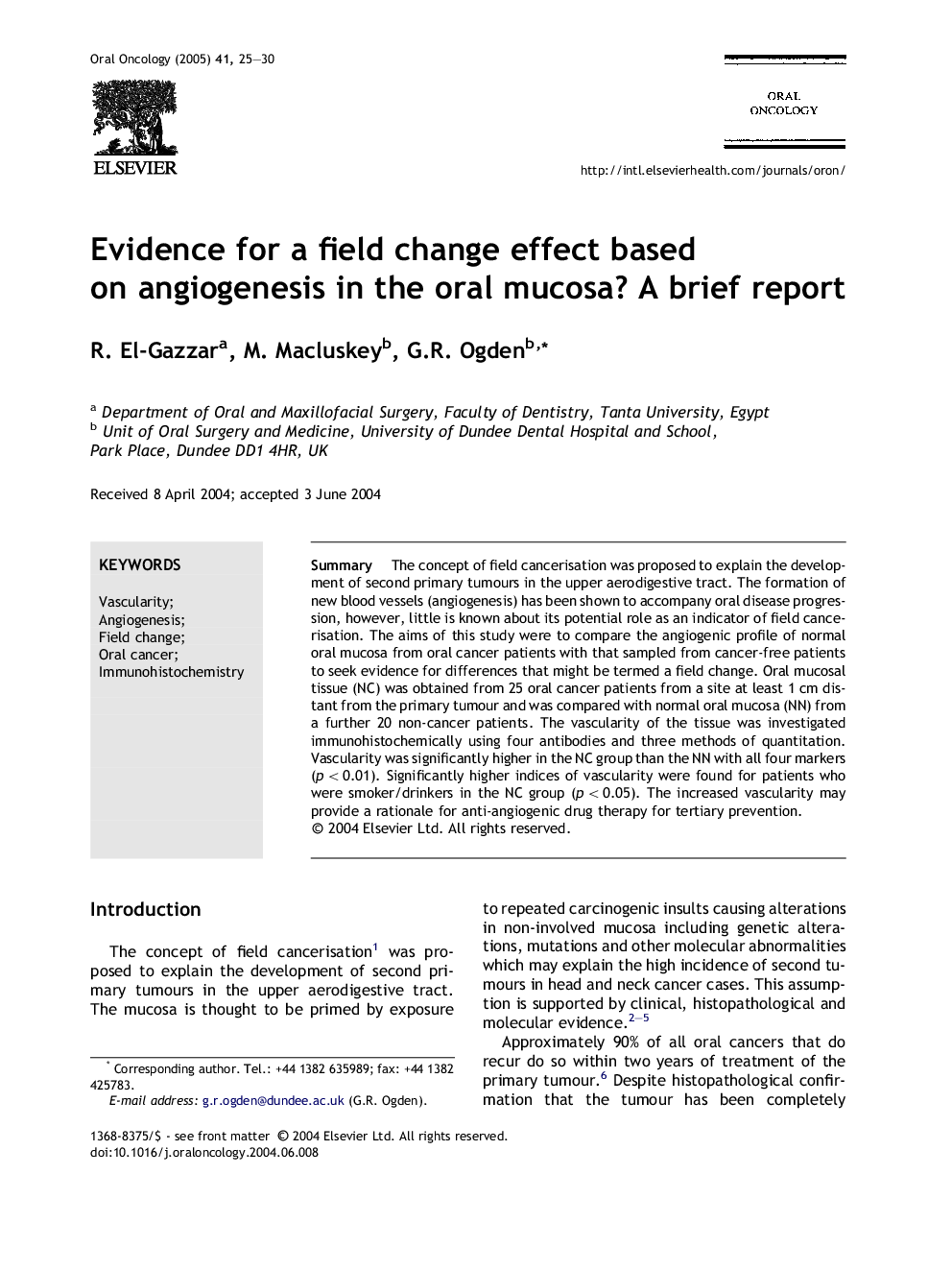| Article ID | Journal | Published Year | Pages | File Type |
|---|---|---|---|---|
| 9216751 | Oral Oncology | 2005 | 6 Pages |
Abstract
The concept of field cancerisation was proposed to explain the development of second primary tumours in the upper aerodigestive tract. The formation of new blood vessels (angiogenesis) has been shown to accompany oral disease progression, however, little is known about its potential role as an indicator of field cancerisation. The aims of this study were to compare the angiogenic profile of normal oral mucosa from oral cancer patients with that sampled from cancer-free patients to seek evidence for differences that might be termed a field change. Oral mucosal tissue (NC) was obtained from 25 oral cancer patients from a site at least 1 cm distant from the primary tumour and was compared with normal oral mucosa (NN) from a further 20 non-cancer patients. The vascularity of the tissue was investigated immunohistochemically using four antibodies and three methods of quantitation. Vascularity was significantly higher in the NC group than the NN with all four markers (p < 0.01). Significantly higher indices of vascularity were found for patients who were smoker/drinkers in the NC group (p < 0.05). The increased vascularity may provide a rationale for anti-angiogenic drug therapy for tertiary prevention.
Related Topics
Health Sciences
Medicine and Dentistry
Dentistry, Oral Surgery and Medicine
Authors
R. El-Gazzar, M. Macluskey, G.R. Ogden,
